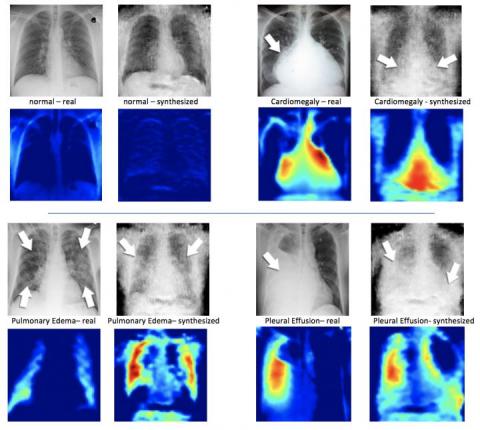A.I. - artificial intelligence - has seen a resurgence of buzzword activity. It's the Internet of Things for 2018. But if the limitation is the algorithm underneath, it's not really AI.
However, smarter algorithms can help in medical diagnostics, because they really don't perform any better than humans now. The big help will be in identifying rare pathologies in medical images, because of the scarcity of images that can be used to train machine learning (sorry, AI) systems in a supervised learning setting. So a team is using machine learning to create computer generated X-rays to augment AI training sets. Which is still not AI, but it's getting closer. They created simulated X-rays that reflect certain rare conditions so that they can combine them with real X-rays to have a sufficiently large database to train the neural networks to identify these conditions in other X-rays.
To create these artificial X-rays, the team uses a deep convolutional generative adversarial network (DCGAN) to generate and continually improve the simulated images. GANs are a type of algorithm made up of two networks: one that generates the images and the other that tries to discriminate synthetic images from real images. The two networks are trained to the point that the discriminator cannot differentiate real images from synthesized ones. Once a sufficient number of artificial X-rays are created, they are combined with real X-rays to train a deep convolutional neural network, which then classifies the images as either normal or identifies a number of conditions.

On the left of each quadrant is a real X-ray image of a patient's chest and beside it, the syntheisized X-ray formulated by the DCGAN. Credit: Hojjat Salehinejad/MIMLab,
University of Toronto
They compared the accuracy of their augmented dataset to the original dataset when fed through their AI system and found that classification accuracy improved by 20 per cent for common conditions. For some rare conditions, accuracy improved up to about 40 per cent -- and because the synthesized X-rays are not from real individuals the dataset can be readily available to researchers outside the hospital premises without violating privacy concerns.
So humans aren't out of things yet.


